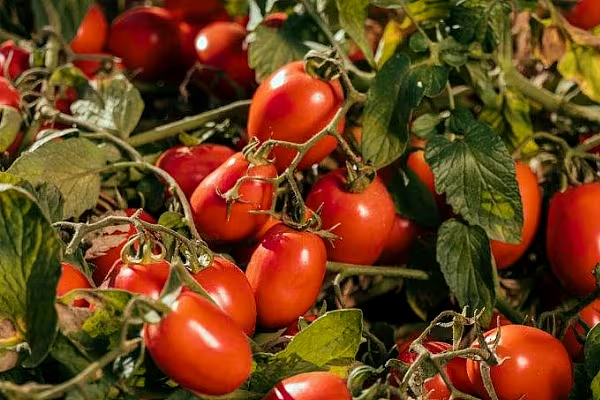Could COVID-19 act as a catalyst for fundamental changes to food supply chains? Nick Peksa investigates. This article first appeared in ESM Issue 5 2020.
Virtually all quotations for globally traded foodstuffs were in decline at the beginning of this year, and COVID-19 has since given further impetus to this downward trend. Europe has seen a sharp economic downturn, with GDP expected to fall by 6.9% across the region, on average.
Stretching the supply chain across the world has proven to be challenging during COVID-19, as disruptions in the supply of raw materials and finished products has led to availability issues.
Some 80% of global sectors have faced supply chain disruptions, and this, combined with the collapse in crude-oil prices, has wide-ranging implications for the food industry. In addition, the pandemic has exposed the trouble of sourcing goods from international countries.
These unexpected changes have forced over 75% of these companies to widen the scope of their existing reshoring plans. European and US firms may face a bill of $1 trillion to move their supply chains out of China alone, however, moving manufacturing closer to home would mitigate the risk of future breakpoints along the supply chain, as well as reducing food miles.
Reshoring FMCG
If we consider the fast-moving consumer goods sectors of food, soft drinks and personal care, competition is intense and will largely rely on the manufacturing configuration of the product itself.
Therefore, the main competitive driver for non-premium products is price. As raw materials account for around 60% of the cost of a finished product, relying on further price decreases is unrealistic. Lowering costs, therefore, must be the main competitive priority for manufacturers. This can be achieved by lowering transportation costs or by reducing their manufacturing costs.
The trend in the early 2000s was based on a low-cost sourcing strategy, by searching for suppliers outside of Europe. Industry searched for countries where labour was cheap, and that had the potential to expand and diversify product ranges rapidly if required. Quality issues arose, so the trend eventually shifted towards best-value sourcing.
COVID-19 may just be the catalyst required by industry to change. Since the early days of low-cost sourcing, China and other low-cost countries have developed, and their cost competitiveness has eroded. Wages have more than tripled in many regions of Asia, which has certainly had an effect on the cost make-up of finished and semi-finished products.
The last ten years have seen significant advances, both in technology and its affordability. Labour forces can be replaced by robotics and artificial intelligence, which, in turn, increases productivity, lowers the risk of injuries, and also enables manufacturing operations to embrace innovation and meet omnichannel demands. Could there be an opportunity for retailers to further embrace the local economy?
Big Data Creates Opportunities
COVID-19 has taught us that when a crisis hits, it tends to have a highly dynamic trajectory. By leveraging Big Data, an approach could be taken that constantly reframes models and plans. By continuously tracking localised behavioural shifts, which will likely persist beyond the crisis, partnerships can take advantage of new consumer demand patterns during outbreaks and allow partners to adapt their supply chains in a highly flexible manner.
By taking a segmented approach based on regional recovery dynamics, adjustments can be made continually, to reflect regional differences in expected recovery speed and consumer sentiment and needs. Could this make it possible to anticipate hoarding, stock problems, and the new e-commerce paradigm?
Big Data could certainly help to anticipate crisis demand and support the change of promotional activities. This, in turn, would allow for reinvestment into digital marketing, however – from a supply side – building new factories would involve significant time and capital expenditure. In these challenging economic conditions, funds may not be available to undergo such projects.
Therefore, retail could look towards the start-up sector and embrace the principles of the shared economy. Although it’s not a new concept, maybe the time is right for more redistributed manufacturing (RDM).
Hybrid Model
RDM is, in effect, equivalent to decentralised manufacturing, facilitating collaboration with numerous smaller localised manufacturing sites and moving away from a few large centralised and potentially international sites.
Localisation could increase the resilience of food production systems, since the reliance on international production facilities and their corresponding supply chains would be reduced. With a leaning towards local delivery on demand, food waste could be limited, and sustainability and carbon footprints improved.
Whilst RDM sounds similar to copacking or private-label development, in practice, it could work as a hybrid model, reliant on a multitude of local manufacturers.
RDM of food products could be leveraged by using shared facilities so that small companies are still able to enjoy the benefits associated with economies of scale. Harnessing the benefits of shared services and establishing new RDM business entities successfully within the local environment presents opportunities for differentiating products to suit localised tastes, which, in turn, promotes the creation of new markets.
This kind of innovation may change the competitive landscape for certain categories, and cost savings could be achieved based on waste reduction and reduced logistics costs. Local authorities and governments could benefit by stimulating the creation of jobs in a very tough trading climate. Producing food products on demand could create fresher products closer to the consumer without the need to use preservatives. This ensures healthier products while simultaneously reducing costs and eliminating wastage.
Food Opportunity
Part of the future of food RDM could lie in product innovation. In the context of the circular economy, food waste that is produced could be used locally in the production of new products – coffee grounds to grow mushrooms, CO2 emissions to grow spirulina, bakery by-products to ferment natural sweeteners, or even fruit to produce leather.
If new factories are established, planning would be required to co-locate other industries that support the local ecosystem: packaging companies, delivery services, freezer capacity, or renewable energy schemes.
With the right infrastructure in place, ingredient surpluses could be used to manufacture meals for sale into charity sectors. Local facilities could establish contracts to support the catering needs of civil services.
Ending Thoughts
Through the use of flexible and adaptive manufacturing strategies, it could be possible to produce fresher food products on demand, close to the consumer. The next level of innovation could be ready meals tailored to the specifications of the customer – for example, an extra-cheesy pizza or a hot, hot curry.
Although we will still be reliant on China, Indonesia and Vietnam for many ingredients, there is the possibility to stimulate sustainability in the food sector, as well as increase transparency about production process and their corresponding environmental footprints. Big Data and RDM would allow consumers to make informed decisions about local food products (even though some ingredients could be sourced internationally).
These changes in the supply chain would reverse the trend of reducing supplier numbers, while computing power should be more than capable of handling a more complex supply chain. Could COVID-19 be the catalyst that shakes up a mature industry by helping the ‘local superstore’ become truly local?
For more information, contact nick.peksa@cost-insights.co.uk.
© 2020 European Supermarket Magazine – your source for the latest retail news. Article by Stephen Wynne-Jones. Click subscribe to sign up to ESM: The European Supermarket Magazine.














